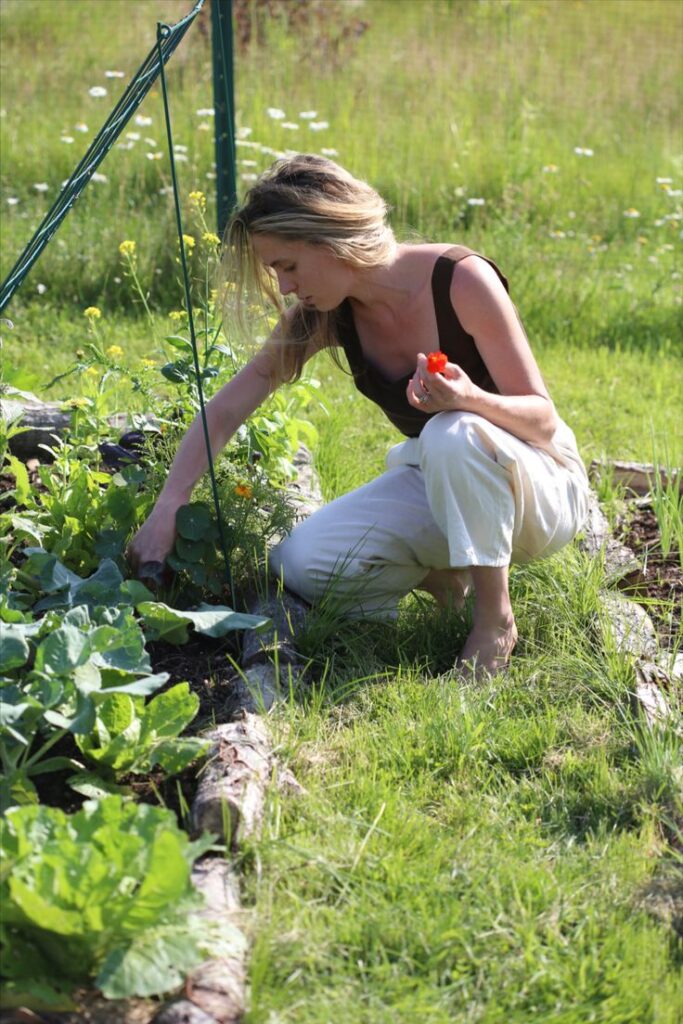
The World Health Organization (WHO) has established the right to health as a fundamental right of every human being. Biodiversity and ecosystem balance are at the heart of the intricate web of life on Earth, sustaining processes essential to survival. Our planet’s biological resources are shaped by natural evolutionary processes and increasingly transformed by anthropogenic activity, population pressures, and globalizing tendencies. When people harm natural resources or disrupt biodiversity and ecosystem balance, they not only put the environment at risk but also endanger the lives of millions. As a result, these resources become threatened, affecting the livelihoods, health, and well-being of those who depend on them.
Furthermore, the increasingly complex global health challenges—including poverty, malnutrition, infectious diseases, and the growing burden of non-communicable diseases—are more than ever linked to the intricate interactions between ecosystems, people, and socioeconomic processes.
We are facing two big problems: the loss of different kinds of animals and plants and more sickness worldwide. These issues are not simple and affect many areas like science, culture, etc. To solve them, we must work together and find solutions to help everyone.
Biodiversity, Health and Interactions
What is Biodiversity?

Biological diversity, most commonly used in its contracted form, biodiversity, is the term used to describe the vast variety of life on Earth, including animals, plants, and microbial species. For instance, scientists have estimated that some 8.7 million eukaryotic species exist. Notably, eukaryotic cell species (including humans) have a nucleus and internal compartments. In contrast, most prokaryotic cell species comprise a single-cell species on Earth.
Interestingly, around 25% (2.2 million) of these species are marine. Moreover, we are still discovering most of them, highlighting the continuous expansion of scientific knowledge in this field.
Biodiversity and Ecosystem Balance
Biodiversity and ecosystem balance refer to the multitude of species on Earth as well as the specific genetic variations and traits within species (such as different crop varieties). For instance, two species of rice contain over 120,000 genetically distinct varieties.
Moreover, this balance includes species assemblage within ecosystems that characterize agricultural and other landscapes, such as forests, wetlands, grasslands, deserts, lakes, and rivers. Consequently, each ecosystem comprises living beings interacting with one another along with the air, water, and soil around them. These multiple interconnections within and between ecosystems form the web of life, of which humans are an integral part and upon which they depend for their very survival. Maintaining biodiversity and ecosystem balance ensures that these life forms and their interactions support human life on Earth (Global Biodiversity Outlook 2 (CBD.int)).
Definition of Biodiversity
The Convention on Biological Diversity (CBD) defines biodiversity as:
“The variability among living organisms from all sources including, among other things, terrestrial, marine, and other aquatic ecosystems and the ecological complexes of which they are part; this includes diversity within species, between species, and of ecosystems” (Global Biodiversity Outlook 2 (CBD.int)).
Biodiversity encompasses much more than the variety of life on Earth; it also includes biotic community structure, the habitats in which communities live, and the variability within and among them.
The Complexity of Biodiversity
Thus, biodiversity extends beyond measuring species numbers by including the complex network of interactions and biological structures that sustain ecosystems. Although “species richness” is one of biodiversity’s key components, the two terms are not synonymous.
In fact, the Convention on Biological Diversity (CBD) provides a widely accepted definition of biodiversity that is not only flexible but also inclusive. It reflects the levels and complexities of biotic and abiotic interactions. Moreover, it recognizes levels of variability within species, between species, and both within and between ecosystems as integral to the ecological processes of which they are a part.
Finally, we also understand that variability manifests differently at various temporal and spatial scales.
What is Health?

The World Health Organization (WHO) constitution defines health as “a complete physical, mental, and social well-being and not merely the absence of disease or infirmity. Health is a dynamic concept influenced by various interacting social, biological, physical, economic, and environmental factors. Undoubtedly, health is one of the most critical sustainable development indicators. In addition, your social position and financial stability not only influence how well you manage your health but also determine how easily you can stay healthy.
However, people are increasingly realizing that environmental changes and ecosystems also play a crucial role in shaping overall well-being.
Human health and well-being are influenced by the health and integrity of local ecosystems and frequently by the health of local plant and animal communities. Biodiversity and ecosystem balance play a crucial role in shaping these interactions, determining the baseline health status of a community.
They provide the foundation for good health and secure livelihoods. However, when disrupted, they can consequently create conditions responsible for morbidity or mortality. Specifically, morbidity refers to the incidence of disease across a population, whereas mortality refers to the rate of death in a population.
The success and long-term effectiveness of public health measures often depend on how well we consider the impact on our environment. This means factoring in our surroundings, climate, access to healthcare, and other key influences on health over time.
Similarly, just as we need to manage our finances wisely, we must also preserve biodiversity and ecosystem balance. After all, all living things are interconnected and depend on one another to function correctly. Just as a car requires all its parts to work smoothly, our environment relies on diverse plants, animals, and microorganisms to maintain stability.
Biodiversity–Health Interactions

The variety of living things on our planet, known as biodiversity, dramatically impacts human health. Indeed, we rely on the natural world for many things, such as clean air, water, food, and medicine. When it comes to biodiversity, we refer to the diversity of living organisms and their habitats.
Unfortunately, the loss of plant and animal species in an area can therefore negatively affect both physical and mental well-being. Biodiversity is not just about the number of species; it includes the genetic variety within them, their unique characteristics, and the environments where they live.
How Biodiversity Supports Ecosystem Health
Biodiversity directly and indirectly affects ecosystem processes and human health. It plays a key role in:
- Regulating ecosystems by maintaining air and water quality
- Preventing biodiversity loss that could lead to new disease outbreaks
- Supporting mental and physical well-being through exposure to natural environments
- Providing essential ecosystem services such as pollination, food production, and climate regulation
At the same time, human activities are altering biodiversity, leading to significant health risks. Drivers of change, such as deforestation, pollution, and climate change, threaten biodiversity and, in turn, impact global health.
Biodiversity’s Role in Human Health and Medicine
Biodiversity contributes to human health in numerous ways:
- Psychological benefits: Access to green spaces and nature improves mental well-being.
- Physiological benefits: Biodiversity directly supports the human microbiome, improving immunity.
- Disease regulation: It helps control infectious disease transmission and prevents outbreaks.
- Food and nutrition: A diverse diet rich in plant and animal sources ensures better health.
- Medical discoveries: Many modern and traditional medicines originate from plants, fungi, and microorganisms.
Additionally, some pharmaceuticals have environmental impacts, affecting biodiversity in return. Understanding these interactions is crucial for sustainable healthcare practices.
The Connection Between Biodiversity and Global Health
The relationship between biodiversity and health extends beyond individuals—it affects communities, environments, and even the planet as a whole. Our bodies host a vast microbiota that influences digestion, immunity, and protection against infections. The health of biodiversity is also reflected in agriculture, where diverse crops, pollinators, and pest-controlling organisms ensure food security.
Nature provides vital services, from purifying water to preventing soil erosion. Ultimately, the health of our planet depends on the health of biodiversity.
Related Articles You May Like
Agricultural Biodiversity and Food Security: Why They Matter
Explore the vital link between agricultural biodiversity and global food security.
The Rhythm of Reciprocity: Humanity’s Dance with the Living Earth
Discover how human-nature interactions shape the balance of our living planet.
Breathing Life: Biodiversity’s Hidden Role in the Safety of Our Shared World
Uncover the unseen ways biodiversity safeguards our environment and well-being.
List of Principal Sources
📖 Constitution of the World Health Organization
World Health Organization (WHO). Defines health as a fundamental right and outlines principles of global health governance.
📖 Global Biodiversity Outlook 2
Convention on Biological Diversity (CBD). Provides insights into global biodiversity trends and conservation priorities.
📖 How Many Species Are There on Earth and in the Ocean?
Camilo Mora, Derek P. Tittensor, Sina Adl, Alastair G. B. Simpson, Boris Worm. Published in PLOS Biology (2011). Estimates Earth’s species diversity.
📖 Human Rights – World Health Organization
WHO’s official resource on the intersection of human rights and health policies.
📖 Connecting Global Priorities: Biodiversity and Human Health
World Health Organization (WHO) & Secretariat of the Convention on Biological Diversity (2015). Explores the relationship between biodiversity and human health.

Leave a Reply